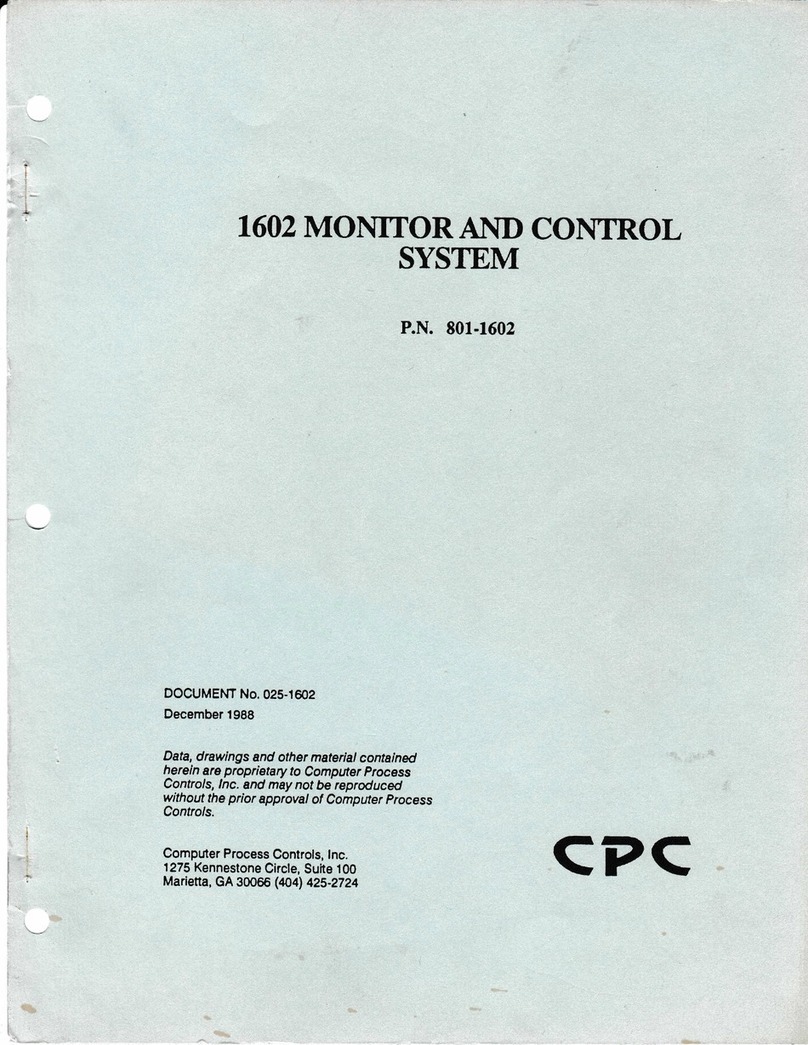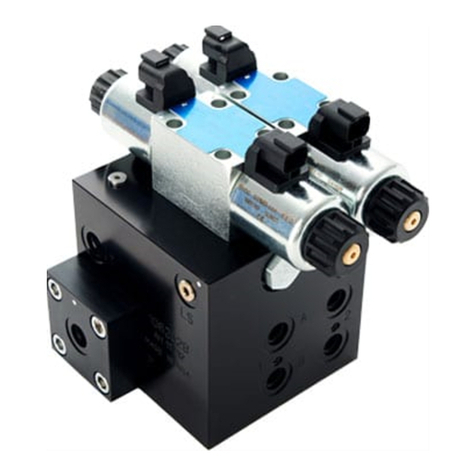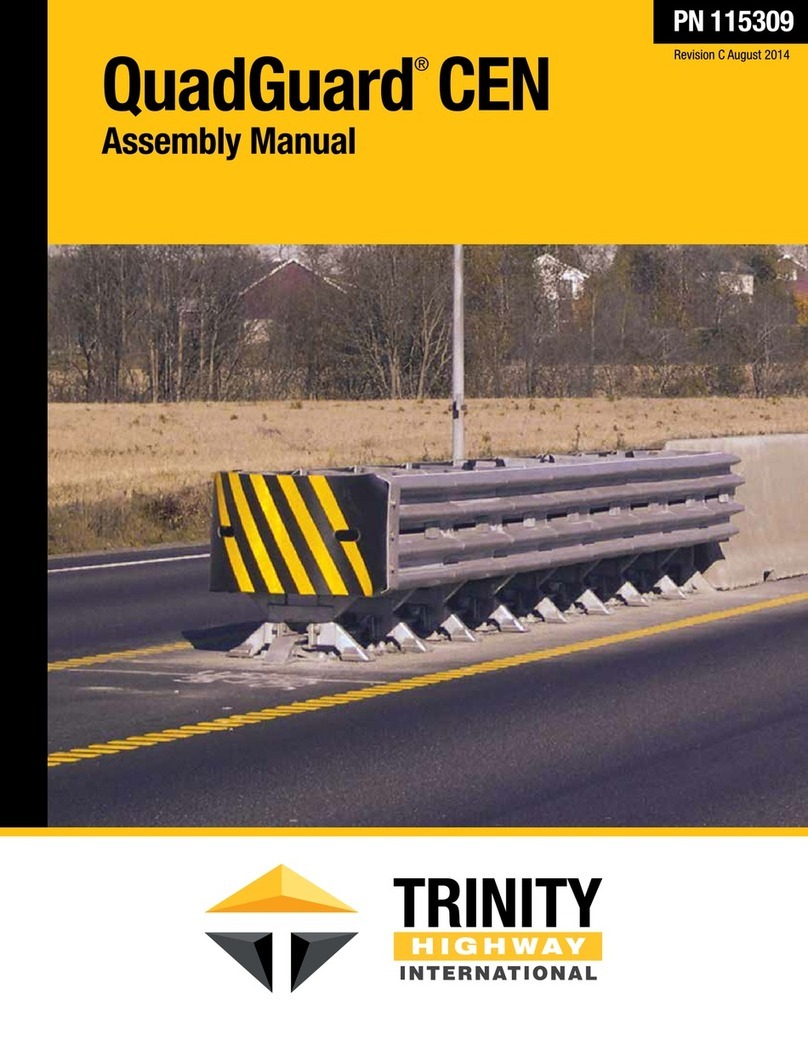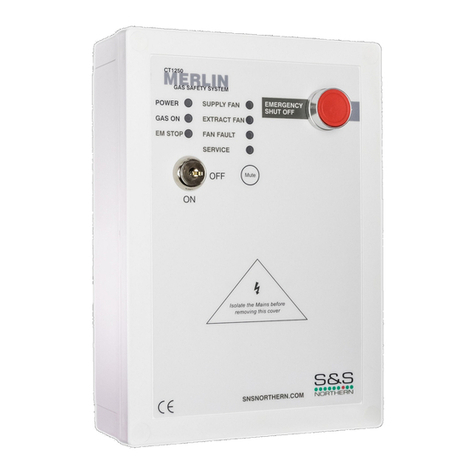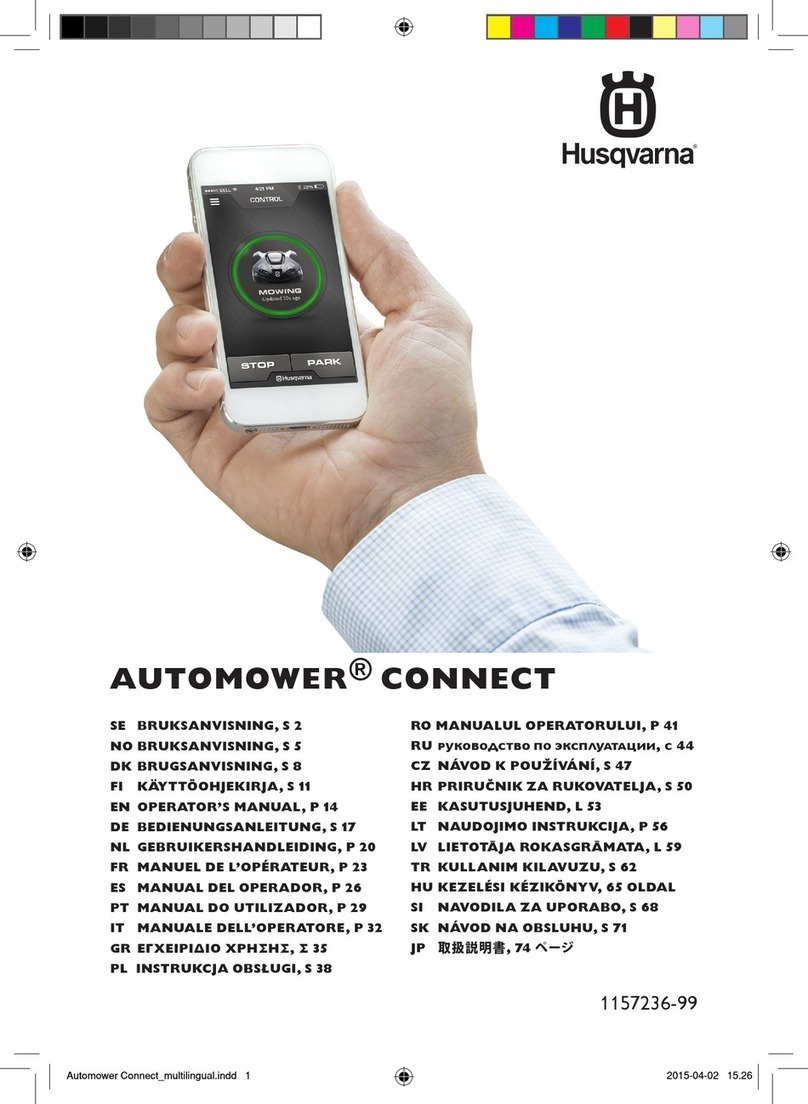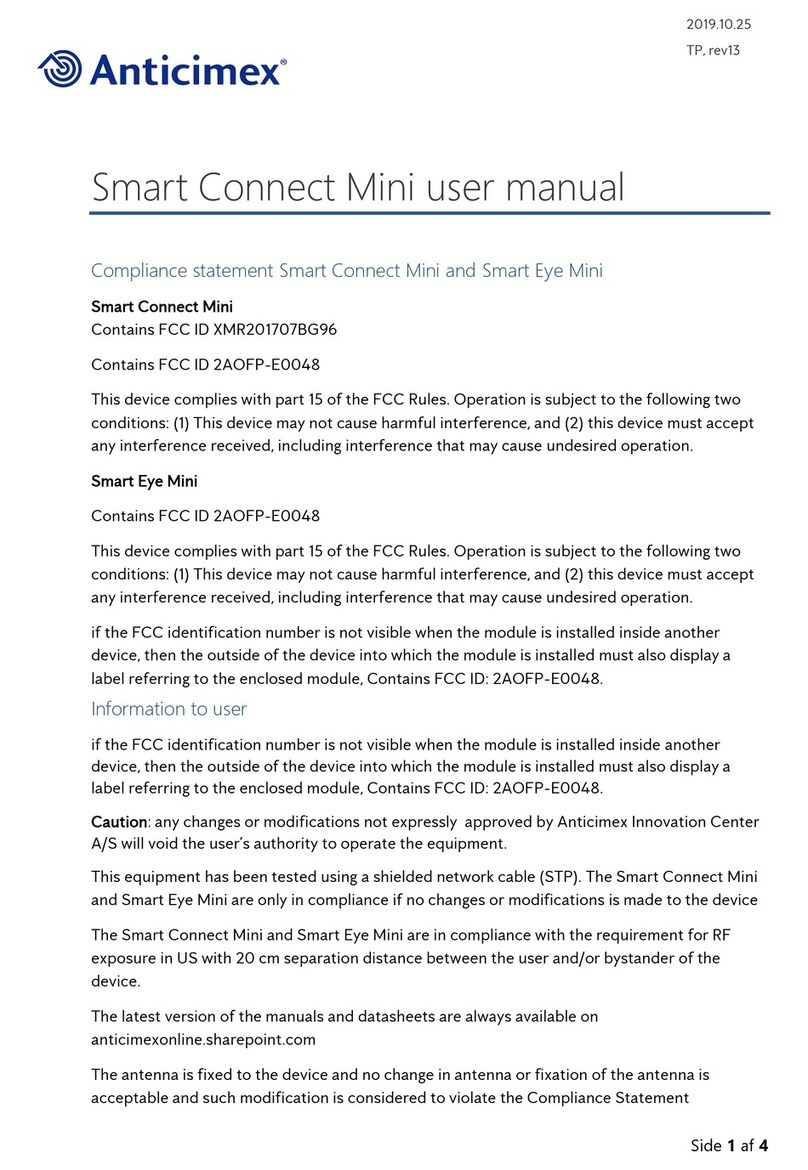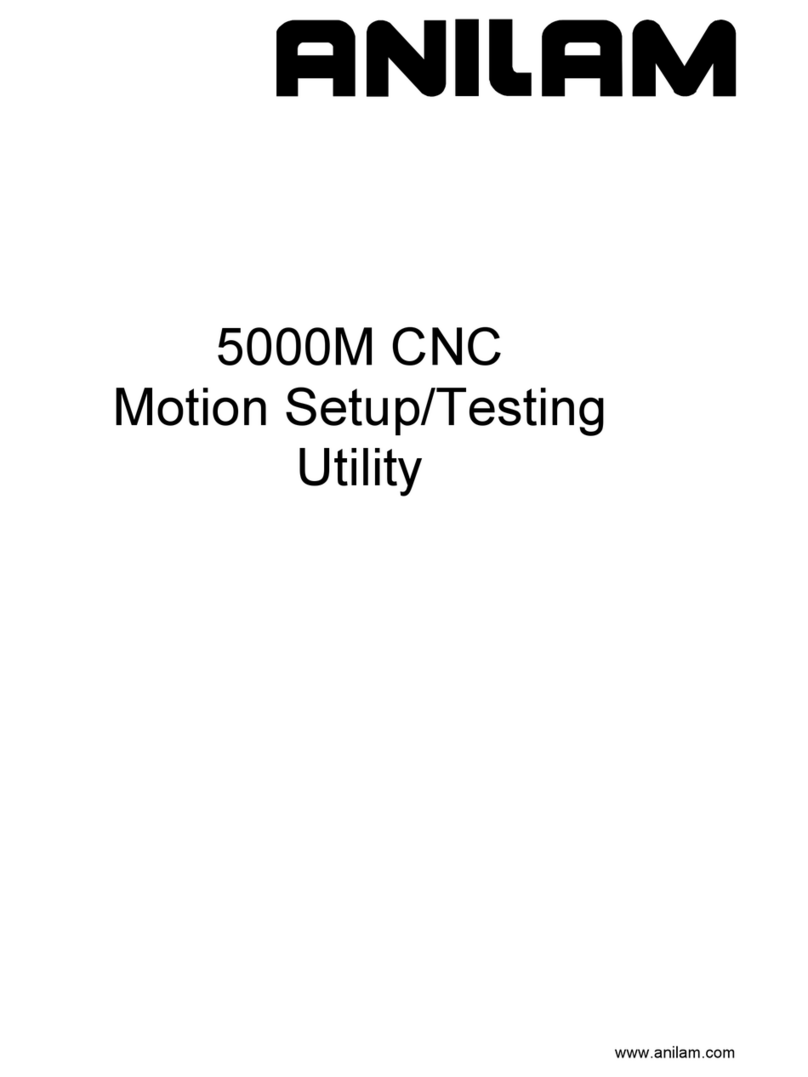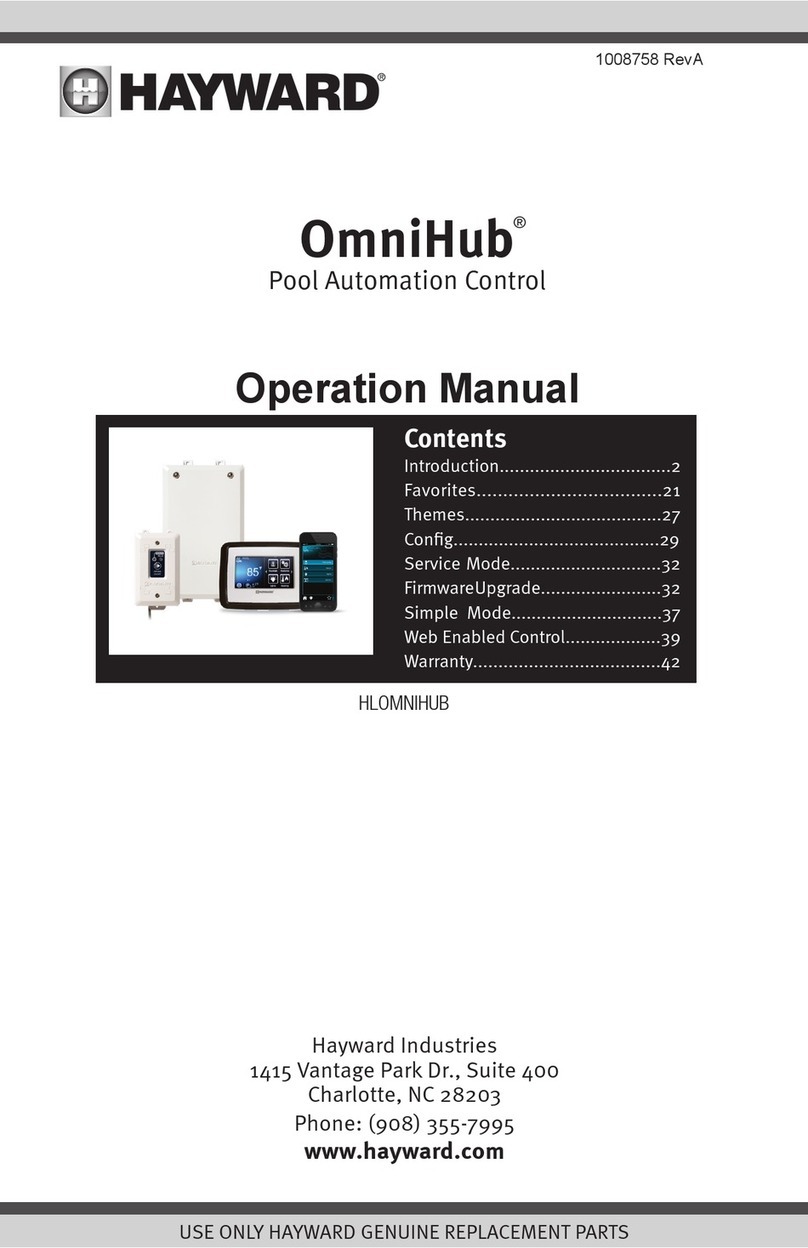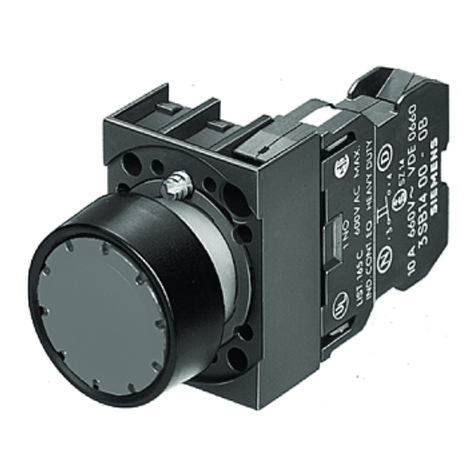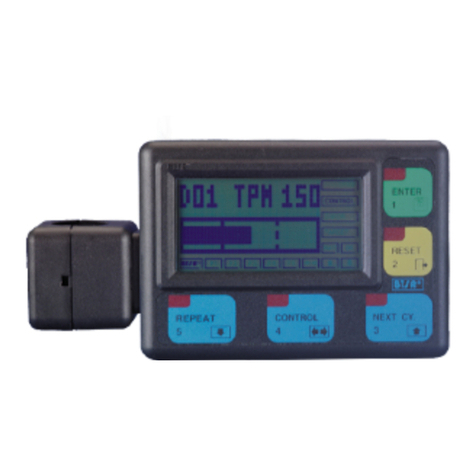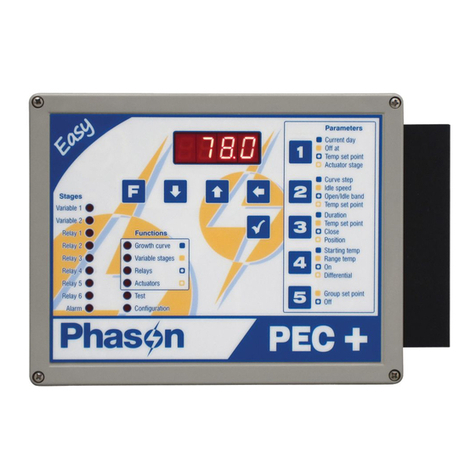Rittal DET-AC III Slave User manual

Faster – better – everywhere.
Montage-, Installations- und Bedienungsanleitung
Mounting, installation and operating instructions
Löschsystem DET
-
AC III Slave
DET-AC III Slave Extinguishing
System
DK 7338.321

Translation of the original operation manual
Rittal GmbH & Co. KG
Postfach 1662
D-35726 Herborn
Germany
Phone: +49(0)2772 505-0
Fax: +49(0)2772 505-2319
Internet: http://www.rittal.com
E-mail: [email protected]
Part number of the German original: 916006
© Rittal GmbH & Co. KG 2016
This manual contains important information on the safe and efficient assembly, installation, com-
missioning, and maintenance as well as on safe and efficient handling of the Extinguishing
system DET-AC III Slave (hereinafter referred as the "system"). This operating instruction is an
integral part of the system and must be kept in the immediate vicinity of the extinguishing zone
at all times. It is intended for the trained Authorized Distributor and the owner of the system
Ä
Chapter 2.8.1 „Qualifications” on page 15.
This operating instruction must have been carefully read before commencing any task. The pre-
requisite for safe operation of the system is compliance with the specified safety instructions
and procedural instructions. In addition to the information provided in this instruction, all local
accident prevention and general safety regulations applicable for the system’s area of imple-
mentation must also be complied with.
Document identification:
Document name ---
Language en_US
Document no. 100046741
DOC ID 100070578
Approval / modification no. ES16-014
Part no. 916007
Revision 03
Version 00
Edition 05-2016
Operating Instructions / DET-AC III Slave / 916007 / 05-2016 / en_US 2

Table of contents
1 General........................................................................................................................... 7
1.1 Overview....................................................................................................... 7
1.2 Abstract......................................................................................................... 7
1.3 Scope of delivery.......................................................................................... 8
1.4 Limitations of liability..................................................................................... 9
2 Safety............................................................................................................................ 10
2.1 Safety instructions and warnings................................................................ 10
2.2 Safety instructions in behavior guidelines................................................... 11
2.3 Intended use................................................................................................ 11
2.4 Misuse......................................................................................................... 11
2.5 Structural changes...................................................................................... 12
2.6 Basic dangers............................................................................................. 12
2.6.1 General dangers associated with fire extinguishing systems..................... 13
2.6.2 Dangers when the system is released........................................................ 13
2.7 Behavior in the event of a fire..................................................................... 14
2.7.1 Preventive steps......................................................................................... 14
2.7.2 Steps in the event of a fire.......................................................................... 14
2.8 Personnel requirements.............................................................................. 15
2.8.1 Qualifications.............................................................................................. 15
2.8.2 Unauthorized personnel.............................................................................. 16
2.8.3 Instruction................................................................................................... 16
2.9 Environmental protection............................................................................ 16
2.10 Owner's responsibility................................................................................. 17
2.10.1 Owner......................................................................................................... 17
2.10.2 Owner’s obligations..................................................................................... 17
2.11 Responsibility of the Authorized Distributor................................................ 18
2.11.1 Authorized Distributor................................................................................. 18
2.11.2 Obligations of the Authorized Distributor.................................................... 18
2.12 Safe operation............................................................................................. 19
2.13 Spare parts................................................................................................. 19
3 Structure, function and connections......................................................................... 20
3.1 Structure..................................................................................................... 20
Table of contents
Operating Instructions / DET-AC III Slave / 916007 / 05-2016 / en_US 3

3.2 Function...................................................................................................... 20
3.3 Connections................................................................................................ 22
3.3.1 Relay outputs.............................................................................................. 23
3.3.2 Door contact switch..................................................................................... 24
3.3.3 Interfaces to the Monitoring System CMC III / CMC‑TC............................. 24
3.3.4 Connection of external alarm device........................................................... 25
3.3.5 Manual call point connection....................................................................... 25
3.3.6 Power supply.............................................................................................. 25
3.3.7 USB port..................................................................................................... 26
3.3.8 Connection for networking.......................................................................... 26
4 Transport instructions................................................................................................ 27
4.1 Transport inspection.................................................................................... 27
4.2 Transport..................................................................................................... 28
4.3 Packaging................................................................................................... 28
5 Mounting and installation........................................................................................... 30
5.1 Operating conditions and installation requirements.................................... 30
5.2 Installation and commissioning................................................................... 31
5.2.1 Installation instructions................................................................................ 32
5.2.2 Installation steps and function test.............................................................. 33
5.2.3 Temperature indicator................................................................................. 35
5.2.4 Language setting for display and operation................................................ 35
5.2.5 Checking the failure and alarm function...................................................... 36
5.3 Installation and commissioning of additional electrical devices.................. 38
5.3.1 Potential-free contacts................................................................................ 39
5.3.2 Monitoring System CMC III / CMC‑TC........................................................ 40
5.3.3 Door contact / blocking............................................................................... 40
5.3.4 Combination of systems.............................................................................. 43
5.3.5 Manual call point......................................................................................... 47
6 Alarms and failures..................................................................................................... 48
7 Display and control elements..................................................................................... 50
8 Messages display........................................................................................................ 51
Table of contents
Operating Instructions / DET-AC III Slave / 916007 / 05-2016 / en_US 4

9 Maintenance program................................................................................................. 55
9.1 Installing the maintenance program............................................................ 55
9.2 Homepage.................................................................................................. 56
9.3 Project......................................................................................................... 57
9.4 Event memory............................................................................................. 57
9.5 Firmware..................................................................................................... 58
9.6 Customer data............................................................................................ 58
9.6.1 General....................................................................................................... 58
9.6.2 Components................................................................................................ 59
9.6.3 Timeouts..................................................................................................... 59
9.6.4 Threshold values......................................................................................... 59
9.7 Operation.................................................................................................... 60
10 Repairs......................................................................................................................... 62
10.1 Regular checks by the owner...................................................................... 62
10.2 Inspection, maintenance and repairs by the Authorized Distributor............ 63
10.2.1 Checking for proper installation.................................................................. 66
10.2.2 Checking for external damage.................................................................... 66
10.2.3 Recording the WA No. / Part No. / F. No..................................................... 66
10.2.4 Recording the date of the current maintenance / inspection....................... 67
10.2.5 Recording the current version..................................................................... 67
10.2.6 Checking current fault messages, history since last maintenance............. 67
10.2.7 Checking the discharge nozzle for contamination...................................... 67
10.2.8 Checking the temperature indicator............................................................ 67
10.2.9 Checking the setting of date and time......................................................... 67
10.2.10 Checking the function of the door contact switch........................................ 68
10.2.11 Checking the blocking switch...................................................................... 68
10.2.12 Checking for proper connection of the transmission................................... 68
10.2.13 Checking whether shutdown occurs........................................................... 68
10.2.14 Reading out and transferring data.............................................................. 68
10.2.15 Checking the electrical connections............................................................ 68
10.2.16 Changing the battery "control card CPU3".................................................. 68
10.2.17 Checking the DIP switch on the control card CPU3.................................... 69
10.2.18 Checking the networking of the systems.................................................... 69
10.2.19 Checking for contamination in the housing................................................. 69
10.2.20 Checking loss monitoring............................................................................ 69
Table of contents
Operating Instructions / DET-AC III Slave / 916007 / 05-2016 / en_US 5

10.2.21 Checking the total weight............................................................................ 70
10.2.22 Changing the tank....................................................................................... 70
10.2.23 Concluding the inspection........................................................................... 70
10.3 Repairs after a release................................................................................ 71
10.3.1 Safety instructions for the tank change....................................................... 71
10.3.2 Removal...................................................................................................... 72
10.3.3 Disposal of the old tank and installation of a new tank............................... 74
10.4 Firmware update......................................................................................... 74
11 Spare parts, accessories, consumables and tools.................................................. 75
12 Technical data.............................................................................................................. 77
13 Index............................................................................................................................. 79
Appendix...................................................................................................................... 82
Table of contents
Operating Instructions / DET-AC III Slave / 916007 / 05-2016 / en_US 6

1 General
1.1 Overview
Fig. 1: Structure of the system
1 Tank (extinguishing agent container) with
fill level monitoring and release device
2 Propellant cartridge
3 Loss monitoring card
4 Connection strip (connection technology
card / network interface card
5 Control card CPU3
6 Discharge nozzle
7 Front panel
1.2 Abstract
The DET-AC III Slave Extinguishing system, which is intended for installation in
closed switch cabinet systems, is a compact unit that was developed to extinguish
fires. A superordinate system (active extinguishing system DET-AC III Master or
aspirating smoke detection system EFD III) is to be in place in order to activate this
unit.
NovecTM 1230 by 3MTM is used as the extinguishing agent which vaporizes at the
discharge nozzle and spreads evenly across the extinguishing zone. This extin-
guishes the fire by extracting heat energy from the flames.
Alarms and failures can be transmitted to a superordinate position (building control
system or permanently manned location) via potential-free contacts or via the Moni-
toring System CMC (a Rittal product).
The compact system with a space requirement of only one rack unit is intended for
installation in the upper third of the closed switch cabinet system to be protected.
General
Operating Instructions / DET-AC III Slave / 916007 / 05-2016 / en_US 7

1.3 Scope of delivery
Designation Piece Part number
Extinguishing system DET-AC III Slave 1 7338.321
CAN bus connecting cable (Master/Slave) 3) 1 907531
Cable power supply 3) 1 903228
Resistance 1.8 kΩ for manual call point 2) 1 675235
Resistance 1.8 kΩ for alarms 2) 1 675235
Terminating resistor 47R with rectifying diode 1N4007 for means
of alarm 2)
1 917751
Resistance 470 Ω 1/2 W for door contact 3) 1 675223
Terminating resistor 1K 3) 1 908119
Terminating resistor 22K 3) 1 906913
Fillister head screw M6x16 (to fasten the front panel in the 19"
cabinet) 3)
2 607284
Fillister head screw DIN 7985 M5x16 (fastening rear side rail) 3) 4 906928
Fillister head screw M4x6 similar to ISO 7380 (assembly side
rails) 3)
12 889264
Plate DET-AC III Slave 3) 1 916088
Left rail 3) 1 915914
Right rail 3) 1 915915
Operating instruction German 3) 1 916006
Operating instruction English 3) 1 916007
Safety data sheet 3MTM NovecTM 1230, German 3) 1 917711
Safety data sheet 3MTM NovecTM 1230, English 3) 1 917712
Safety data sheet DET-AC, German 3) 1 920329
Safety data sheet DET-AC, English 3) 1 920330
1) ... pre-assembled
2) ... assembled
3) ... enclosed
Accessories
● Suction pipe system (part number 7338.130)
● Access sensors (part number 7320.530)
General
Operating Instructions / DET-AC III Slave / 916007 / 05-2016 / en_US 8

● Monitoring System CMC III
– CMC III Processing Unit (part number 7030.000), optional
– CMC III Compact Processing Unit (part number 7030.010), optional
● Depth-variable slide rails (part number 5501.480), optional
1.4 Limitations of liability
All specifications and information provided in this operating instruction have been
compiled in consideration of all applicable standards and regulations as well as the
state of the art. The manufacturer accepts no liability for the following damage:
● Failure to follow this operating instruction
● Failure to follow local provisions and any regulations regarding the maintenance
of fire extinguishing systems
● Operating the system in environmental and usage conditions other than the ones
for which the system has been designed
Ä
Chapter 12 „Technical data”
on page 77
● Use for other than the intended purpose
● Unauthorized technical changes
● Use of components not included in the system’s scope of delivery
● Non-compliance with maintenance intervals
● Non-performance of maintenance
● Maintenance errors due to non-compliance with current maintenance instruc-
tions / current maintenance notes of the manufacturer
● Damage for which a third party is to blame
● Intentional damage/manipulations
● Damage resulting from an unauthorized modification to the system
● Repairs not carried out according to regulations
● Actions that are not in the area of those described in this operating instruction
Use of the system must comply with local regulations, laws and standards. The
owner is responsible for the appropriate selection, intended use and compliance
with all standards, codes and ordinances.
The construction and use of the system described in this operating instruction are
only to be used for the purposes that are shown and described. The manufacturer or
private labeler provides no warranty or guarantee for uses not described in this
specification or for uses that do not comply with legal and local regulations.
Graphs or reports used in this operating instruction are for illustrative purposes only,
are not representative or descriptive of any specific design and can deviate from the
actual version of the system.
The manufacturer or private labeler and its representatives disclaim use of the
depictions, graphs and reports for any purpose other than illustration; any other
application or usage is solely the responsibility of the owner.
General
Operating Instructions / DET-AC III Slave / 916007 / 05-2016 / en_US 9

2 Safety
This section provides an overview of all important aspects that are essential for the
protection of personnel as well as safe and trouble-free operation. Additional task-
specific safety instructions will be provided in the sections that refer to the individual
life stages of the plant.
2.1 Safety instructions and warnings
Safety instructions and warnings are marked with symbols in this manual. The
safety instructions and warnings are always introduced by signal words that express
the extent of the hazard.
L DANGER
Indicates an imminent danger. This danger will result in death or serious injuries if it
is not avoided.
L WARNING
Indicates a potentially imminent danger. This danger could result in death or
serious injuries if it is not avoided.
L CAUTION
Indicates a potentially imminent danger. This danger could result in minor or mod-
erate injuries if it is not avoided.
NOTICE
Indicates a potentially harmful situation. This danger could result in property or
environmental damage if it is not avoided.
Additional markings
INFORMATION
This marking indicates useful tips and recommendations as well as information for
efficient and trouble-free operation.
In instructions, this marking begins with the symbol .
Safety
Operating Instructions / DET-AC III Slave / 916007 / 05-2016 / en_US 10

2.2 Safety instructions in behavior guidelines
Safety instruction can refer to specific, individual behavior guidelines. Such safety
guidelines (warning messages) are embedded in behavior guidelines so that they do
not interrupt the reading flow when executing the action. The signal words described
above are used.
Example:
1. Unscrew screw.
2. L CAUTION! Clamping danger on the cover!
Carefully close the cover.
3. Tighten screw.
2.3 Intended use
This system is designed exclusively for the intended use described here.
The system is designed exclusively to extinguish smoldering or developing fires in
closed 19" switch cabinet systems.
The system must only be operated using the extinguishing agent NovecTM 1230 by
3MTM.
The system must only be used in areas which personnel do not enter.
Typical applications for using the system is the protection of closed 19” switch cabi-
nets. This, for example, includes:
● IT, server and network technology
● Production controls
● Telecommunications equipment
● Power supply and control systems
The system may only be operated within the operating conditions specified in
Ä
Chapter 12 „Technical data” on page 77.
Intended use also includes compliance with all specifications regarding mounting,
installation, checking, inspection and maintenance, which are described in this oper-
ating instruction:
Ä
Chapter 5 „Mounting and installation” on page 30
Ä
Chapter 10 „Repairs” on page 62.
2.4 Misuse
Any use that extends beyond the intended use, or any other use of the system is
considered misuse.
Safety
Operating Instructions / DET-AC III Slave / 916007 / 05-2016 / en_US 11

L WARNING
Danger due to misuse!
Misuse of the system can lead to personal injury and property damage.
● No structural changes to the device to be protected or to the system may be
performed.
● Do not use the device to be protected in any way that is contrary to that which
was considered by the trained Authorized Distributor.
● Do not block the discharge nozzles.
The system must not be used for the following incendiaries:
● Chemicals that release oxygen.
● Mixtures containing oxidizing substances (e.g. sodium chlorate, sodium nitrate,
explosives, gunpowder).
● Chemicals capable of thermally decomposing autonomously (e.g. certain organic
peroxides).
● Reactive metals (e.g. sodium, potassium, magnesium, titanium or zirconium) and
reactive hybrids or metal amides.
The system must not be used under the following operating conditions:
● Hot surfaces above 500 °C (932 °F), which due to operational conditions have
been heated to temperatures in excess of the extinguishing agent’s decomposi-
tion temperature.
2.5 Structural changes
This system has been tested for the intended use. Consult an Authorized Distributor
if changes to the device are planned.
2.6 Basic dangers
The following section describes remaining risks that can arise from the system even
with intended use.
In order to reduce risks of personal injury and property damage and avoid dan-
gerous situations, the safety instructions listed here and the safety instructions in the
other sections of this operating instruction must be followed.
Safety
Operating Instructions / DET-AC III Slave / 916007 / 05-2016 / en_US 12

2.6.1 General dangers associated with fire extinguishing systems
L WARNING
Risk of injury from faulty release!
A faulty release of the system may cause injuries and property damage.
● Release the system via manual call points only in the event of a fire.
● Protect the manual call points in the extinguishing zone from inadvertent actua-
tion.
● Block the system before performing any work in the extinguishing zone gener-
ating heat and smoke.
2.6.2 Dangers when the system is released
L WARNING
Risk of injury from developing products of decomposition and fire smoke!
Fires generate decomposition products which may lead to chronic health impair-
ments if inhaled and if there is contact with the skin.
● Do not use the system if, in normal operation, surface temperatures in excess
of 500 °C (932 °F) are to be expected.
● Keep the extinguishing zone closed in the event of a fire, e.g. do not open any
of the switch or server cabinet doors.
● After a fire, the extinguishing zone is not to be opened by the safety officer until
the danger of re-ignition has subsided.
L WARNING
Risk of injury from shock!
The release of the system involves sudden noises from the discharged agent
which may surprise persons to the extent that they suffer shock.
● Inform all persons staying close to the extinguishing zone about the existence
of the system and the possibility of its sudden release.
● Make persons familiar with the procedures required in the event of an alarm, a
fire or release of the system.
L WARNING
Risk of injury from noise!
High noise levels due to acoustical alarms (e.g. signal horns) can cause hearing
damage.
● Stay out from the immediate vicinity of acoustic alarm equipment.
Safety
Operating Instructions / DET-AC III Slave / 916007 / 05-2016 / en_US 13

NOTICE
Property damage from cooling ambient air!
The discharged extinguishing agent extracts heat from the ambient air contained in
the extinguishing zone. This cools down the extinguishing zone by as much as
20 °C (36 °F) when fighting a fire.
● Do not mount components that are sensitive to cold and varying temperatures
in the immediate vicinity of the discharge nozzle.
NOTICE
Property damage from falling and flying objects!
The discharge velocity of the extinguishing agent may cause unsecured objects to
tip over or become airborne.
● Do not place any loose objects into the outflow area of the discharge nozzle.
2.7 Behavior in the event of a fire
2.7.1 Preventive steps
● Always be prepared for fires and accidents!
● Keep first-aid equipment (first-aid kit, blankets, etc.) and substitute extinguishing
agents (e.g. fire extinguisher) in proper working order and readily available.
● Familiarize personnel with accident prevention, first aid and rescue equipment as
well as options for releasing the system manually.
● Keep access paths clear for rescue vehicles.
2.7.2 Steps in the event of a fire
L WARNING
Risk of death due to fire!
Severe fire smoke may develop when a fire erupts and while the fire is being extin-
guished. Fire smoke development may result in severe airway damage or death.
● Keep the extinguishing zone closed in the event of a fire, e.g. do not open any
of the switch or server cabinet doors.
● After a fire, do not have the extinguishing zone opened by the safety officer
until the danger of re-ignition has subsided.
● Shut down all consumers of the power supply that are in the cabinet.
Take the following steps when a fire erupts:
● Initiate first-aid measures if necessary.
● Alert any endangered persons in the adjoining areas.
Safety
Operating Instructions / DET-AC III Slave / 916007 / 05-2016 / en_US 14

● Notify the fire department and/or emergency medical services.
● Notify the person in charge at the system's location.
2.8 Personnel requirements
2.8.1 Qualifications
The different tasks described throughout this manual require different qualifications
and skills from the persons entrusted with these tasks.
L WARNING
Risk from insufficiently qualified personnel!
Insufficiently qualified personnel is incapable of assessing the risk involved in han-
dling the system and may cause severe or fatal injuries to themselves or others.
● Allow only qualified personnel to perform the work.
All work must be limited to personnel that can be expected to complete the work in a
reliable manner. Persons whose ability to respond is impaired, for example, by
drugs, alcohol or medication are not permitted.
Definition of the qualifications:
Authorized Distributor
The Authorized Distributor has verifiably undergone training provided by the manu-
facturer during which the company was made familiar with the knowledge and pro-
cedures necessary to install, commission and service the system in a safe manner.
Person in charge of the system
The person in charge of the system has verifiably been given instructions by the
company that installed the system as to the specifics of the tasks entrusted to
him/her and all possible dangers that may arise from improper conduct. The person
in charge of the system has been appointed by the owner as the person who is
responsible for the correct and proper completion of the work and inspections per-
formed on the system.
Qualified electrician
The qualified electrician is capable of performing work on electrical systems and
independently detecting and avoiding any possible risks due to his/her long years of
expertise and experience and his/her familiarity with all applicable standards and
regulations.
A qualified electrician must also provide proof of his/her professional qualification
that confirms his/her capacity to perform work on electrical systems.
Safety
Operating Instructions / DET-AC III Slave / 916007 / 05-2016 / en_US 15

The qualified electrician must comply with the provisions of all applicable legal regu-
lations regarding accident prevention.
2.8.2 Unauthorized personnel
L WARNING
Risk of injury due to unauthorized personnel!
Unauthorized personnel who do not meet the requirements described herein are
not familiar with the risks involved in releasing and/or blocking the system. This
creates a risk of injury.
● Keep unauthorized personnel away from the system.
● Make sure that a person in charge of the system is available who has the
knowledge necessary to handle the system properly.
2.8.3 Instruction
The Authorized Distributor must instruct the owner’s person in charge of the system
in the handling of the system and subsequently hand over the operating instruction
to this person. For better traceability an instruction report must be drawn up with at
least the following contents:
● Date of the instruction
● Name of the person being instructed
● Content of the instruction
● Name of the instructor
● Signatures of the instructed person and the instructor
● Part number and serial number of the system.
2.9 Environmental protection
NOTICE
Danger to the environment due to incorrect handling of materials that can
harm the environment!
In case of incorrect handling of materials that can harm the environment, especially
improper disposal, there can be significant damage to the environment.
● Always observe the notes below about the handling of materials that can harm
the environment and their disposal.
● If materials that can harm the environment accidentally escape into the envi-
ronment, take suitable measures immediately. In case of doubt, inform the
responsible authority about the damage and ask what suitable measures to
take might be.
Safety
Operating Instructions / DET-AC III Slave / 916007 / 05-2016 / en_US 16

Extinguishing agent NovecTM 1230
The extinguishing agent has been classified as slightly reactive to water. It must be
disposed of in accordance with all applicable local waste disposal regulations.
Observe the safety data sheet provided by the extinguishing agent’s manufacturer
3MTM. The photolytic half-life of the extinguishing agent is 3 – 5 days. The global
warming potential (GWP) value is 1, while the value of the ozone decomposition
potential (ODP) is 0.
2.10 Owner's responsibility
2.10.1 Owner
The owner is the person or entity that operates the system himself/itself for commer-
cial or economic purposes, or who transfers the device to a third person for use/
application, and who bears the legal responsibility for protecting the user, personnel,
or third parties.
2.10.2 Owner’s obligations
● It is the owner's responsibility to ensure that the system complies with the local
provisions and regulations applying to the operation of extinguishing systems
using the extinguishing agent NovecTM 1230 and verify the system's operability.
In this regard, the following particularly applies:
– The owner must comply with the applicable regulations as well as all addi-
tional local regulations applying to the operation of the system.
– The owner must always observe the inspection intervals specified in this
operating instruction.
– The owner must perform these inspections and operate the system following
the procedural instructions described throughout this operating instruction.
– The owner must document the results of the inspections in the report log.
– The owner must report any detected defects and/or damage to the Author-
ized Distributor, which he/she is not authorized to rectify independently.
– The owner must document all shutdowns and failures the system experi-
ences in the report log of the system.
● The "Occupational Safety and Health Act" of 1970 specifies that a safe work-
place must be provided at all times for execution of tasks. To this end, the owner
must ensure that the system is inspected and operated in accordance with all
applicable commercial, industrial, local, federal and state laws, standards and
regulations.
● The owner must ensure that the personnel performing the work have the qualifi-
cations necessary to complete the task.
● The owner must ensure that all employees who handle the system have read
and understood this operating instruction. In addition, the owner must train per-
sonnel and inform them of dangers at regular intervals.
● The owner must ensure that all employees working in the extinguishing zone of
the system have been informed of the existence of the system and know the
risks involved and the steps necessary to handle the system (e.g. behavior in the
event of a fire or inadvertent release).
Safety
Operating Instructions / DET-AC III Slave / 916007 / 05-2016 / en_US 17

● The owner must appoint a person in charge of the system, who will be instructed
by the Authorized Distributor about how to safely perform tasks and checks at
the owner’s site of operation. The owner will confirm in the documentation of the
Authorized Distributor that these instructions have been given.
● The owner must confirm to the Authorized Distributor that the system's function
and mode of operation have been understood and the system was ready for
operation when accepted by the owner.
● The owner must ensure the availability of substitute extinguishing agents suit-
able for fire fighting in case the system is taken out of operation/disassembled.
2.11 Responsibility of the Authorized Distributor
2.11.1 Authorized Distributor
The Authorized Distributor is the entity that installs the system, commissions the
system, and can perform the service on the system.
2.11.2 Obligations of the Authorized Distributor
● The Authorized Distributor must ensure that the extinguishing system complies
with the provisions and regulations applicable for installation of extinguishing
systems in enclosed equipment and that the system has been correctly chosen
for the protection of this equipment (correct nominal fill, density given, ...). In this
regard, the following particularly applies:
– The Authorized Distributor must comply with the applicable local regulations,
and consider these regulations in the selection of the system.
– The Authorized Distributor must take the current state of the technology into
consideration at all times.
● The "Occupational Safety and Health Act" of 1970 specifies that a safe work-
place must be provided at all times for execution of tasks. To this end, the
Authorized Distributor must ensure that the system is erected, installed, and
maintained in accordance with all applicable commercial, industrial, local, federal
and state laws, standards and regulations.
● The Authorized Distributor must label the system and affix all necessary informa-
tion where it is permanently visible.
● The Authorized Distributor must ensure that the personnel performing the tasks
have the qualifications necessary for execution of the tasks.
● The Authorized Distributor must instruct a responsible person appointed by the
owner in the safe execution of the tasks and inspections that must be executed
by the owner, and document execution of this instruction.
● The Authorized Distributor must document the actual status of the system at the
time of transfer and inform the owner’s responsible person of the actual status.
Safety
Operating Instructions / DET-AC III Slave / 916007 / 05-2016 / en_US 18

2.12 Safe operation
The system described here was manufactured in accordance with state-of-the-art
technology and recognized safety rules and exhibits a high degree of operational
safety.
Nevertheless, improper or non-intended use / application of this system can cause
impairments to the system or to other assets.
The system must only be used in a fully functional, undamaged state.
The information provided in this operating instruction regarding installation, opera-
tion and maintenance of the system is intended to aid proper, safe and failure-free
operation. As regulations in this regard can deviate from each other due to world-
wide use, the applicable national regulations and laws at the site of operation are to
be observed in so far as they contradict the information provided in this operating
instruction. As a general rule, the following information in particular is to be
observed / adhered to:
● National safety and accident prevention regulations.
● National standards and laws; in particular those concerning hazard detection
systems.
● National assembly and construction regulations.
● Generally recognized rules of technology.
● This operating instruction and the warnings and safety instructions contained
within it.
● Parameters and technical data of this system.
If it can be assumed that safe operation is no longer possible (e.g. in the event of
damage), the system is to be taken out of service immediately and secured against
accidental commissioning.
2.13 Spare parts
Only original spare parts may be used
Ä
Chapter 11 „Spare parts, accessories, con-
sumables and tools” on page 75.
Safety
Operating Instructions / DET-AC III Slave / 916007 / 05-2016 / en_US 19

3 Structure, function and connections
3.1 Structure
Fig. 2: Structure of the system
1 Tank (extinguishing agent container) with
fill level monitoring and release device
2 Propellant cartridge
3 Loss monitoring card
4 Connection strip (connection technology
card / network interface card
5 Control card CPU3
6 Discharge nozzle
7 Front panel
3.2 Function
In the event of a release, the system is triggered by a superordinate system (Active
extinguishing system DET-AC III Master or aspirating smoke detection system
EFD III). The release device is triggered electrically whereby the propellant cartridge
(Fig. 2 /2) is opened and the foaming agent flows into the tank (Fig. 2 /1). The relay
output „Extinguishing” is triggered. The foaming agent forces the extinguishing
agent to the discharge nozzle (Fig. 2 /6). At the nozzle, the extinguishing agent
vaporizes and develops the concentration necessary for extinction in the switch cab-
inet to be protected.
The fill level monitoring, which is integrated in the tank, reports an extinguishing
agent loss to the electronic evaluation unit of the superordinate system, which then
shows a failure (extinguishing agent loss) on the display. The relay output „Common
failure” is triggered.
The power supply for the system is ensured by means of the superordinate system.
The operation and display of the current state of the system is by means of the
superordinate system.
Structure, function and connections
Operating Instructions / DET-AC III Slave / 916007 / 05-2016 / en_US 20
This manual suits for next models
1
Table of contents



